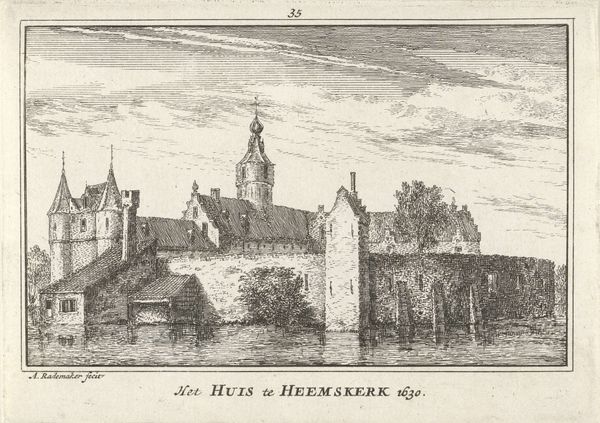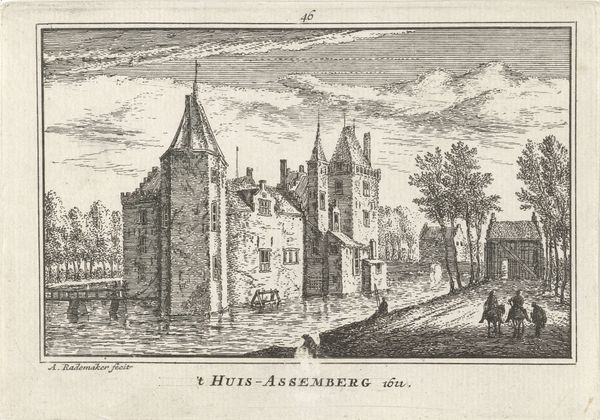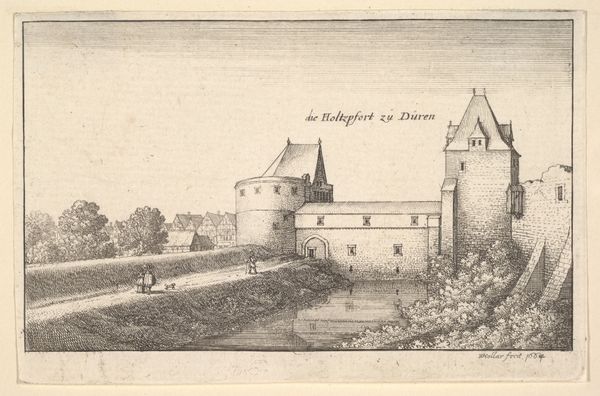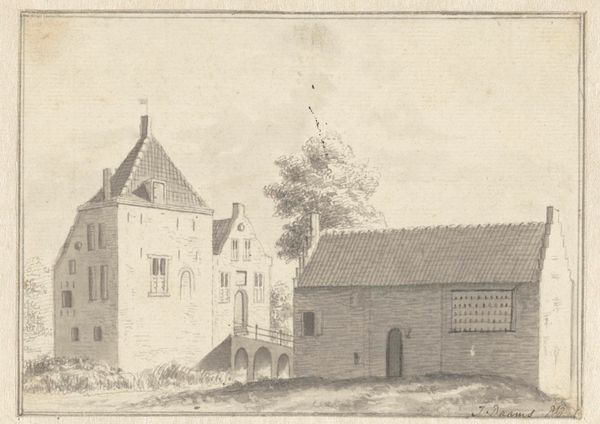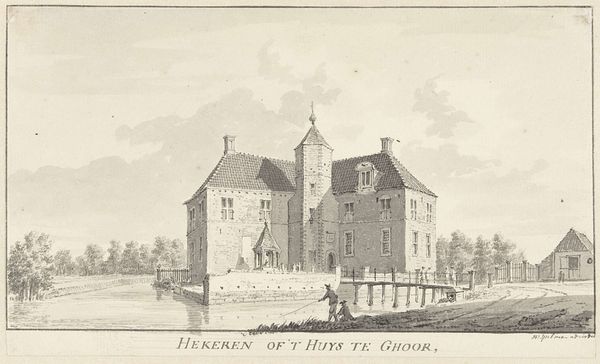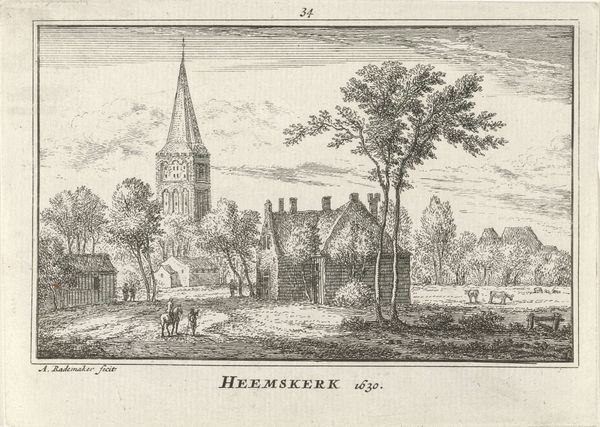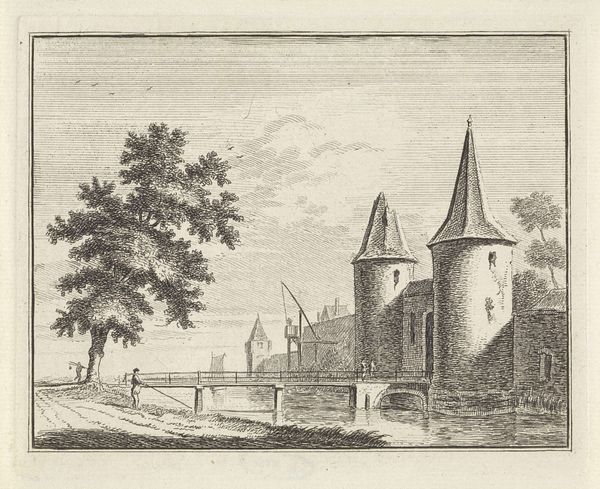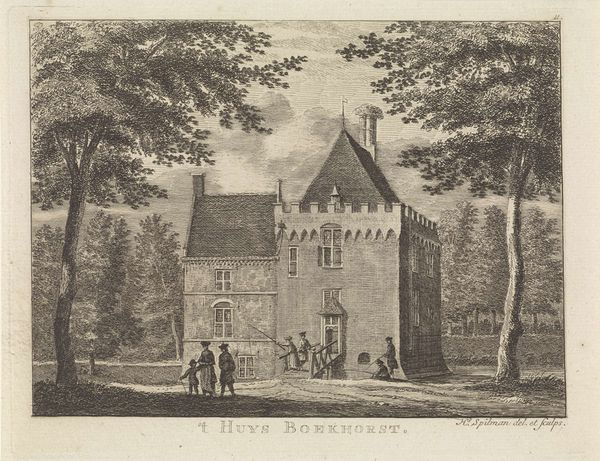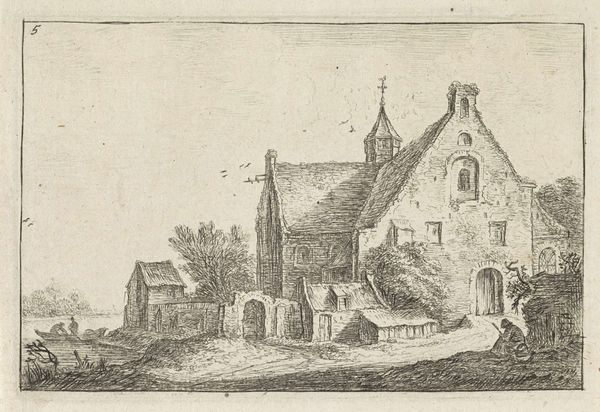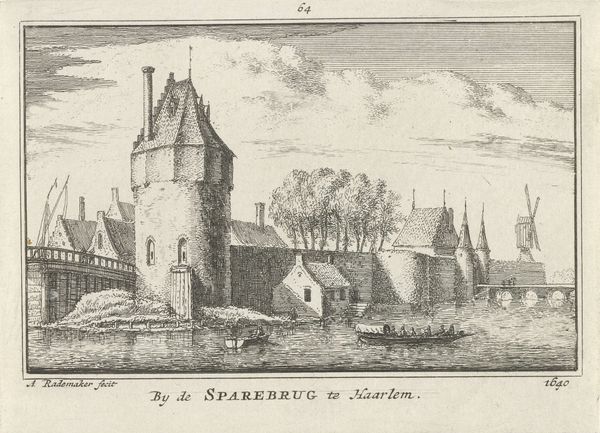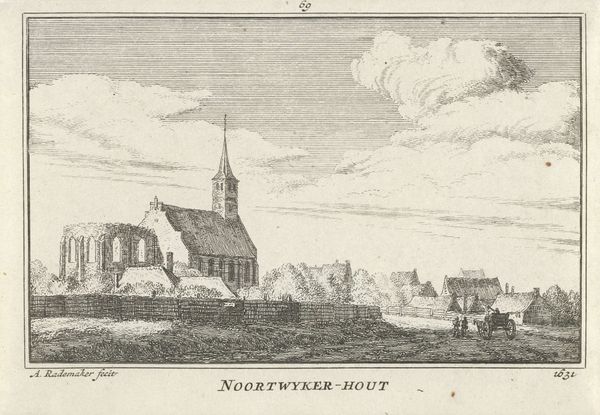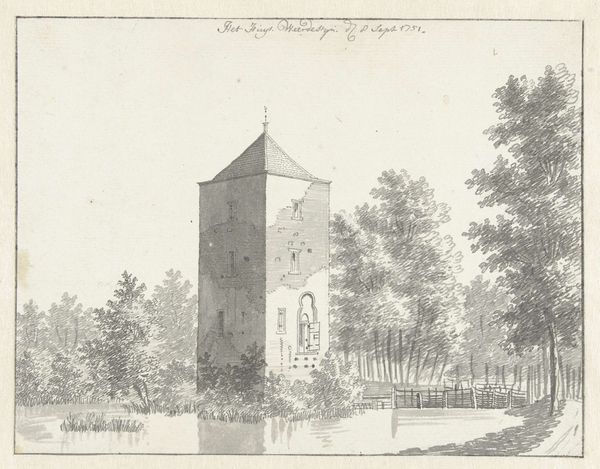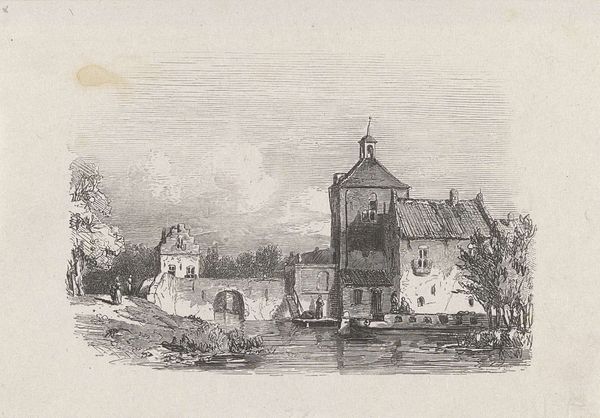
print, engraving
#
baroque
#
dutch-golden-age
# print
#
old engraving style
#
landscape
#
cityscape
#
engraving
Dimensions: height 80 mm, width 115 mm
Copyright: Rijks Museum: Open Domain
Editor: We're looking at "Hertogpoort te Nijmegen," an engraving by Abraham Rademaker, created sometime between 1727 and 1733. I’m immediately struck by the stark contrast between the imposing architecture of the gate and the seemingly mundane daily life unfolding in front of it. What do you find most compelling about this piece? Curator: From a historical perspective, this engraving serves as more than just a depiction of a physical place. It's a document of the Dutch Golden Age and the shifting roles of civic structures. Nijmegen, with its rich history and strategic importance, used architecture like the Hertogpoort to project power. Consider how Rademaker’s rendering might be commenting on the town's identity at the time. What do you notice about the placement of the figures in relation to the gate? Editor: They seem small, almost insignificant, next to the gate, highlighting its massive size and perhaps its symbolic importance. Curator: Exactly! And the artist chooses to depict the gate in this state, perhaps reflecting a change in Nijmegen’s socio-political significance or maybe a deliberate romanticization of times past. Editor: So, it’s not just about showing us what it looked like, but also hinting at a bigger story about power, identity, and perhaps even nostalgia? Curator: Precisely. Prints like this were often commissioned and circulated, shaping public perception of cities and their histories. Think about it as early propaganda or placemaking. How do you feel knowing that? Editor: That's really insightful; I’d previously looked at it more as a simple record. Now I understand that even seemingly objective depictions can be powerful social and political statements. Thanks! Curator: It's about understanding how images participate in broader cultural narratives, and the forces at play behind the scenes.
Comments
No comments
Be the first to comment and join the conversation on the ultimate creative platform.
